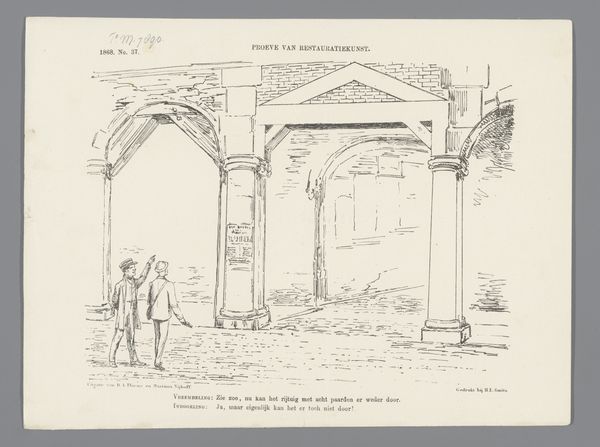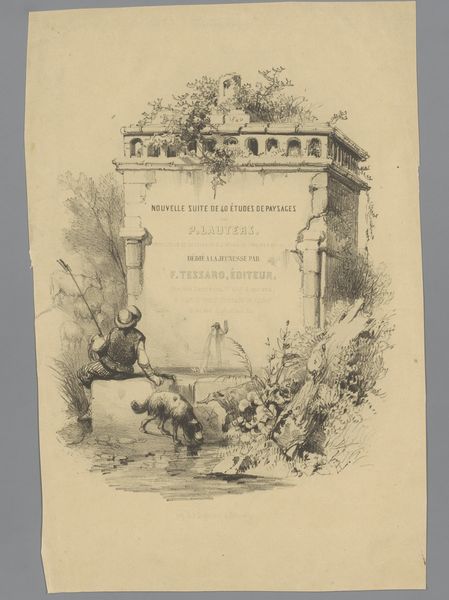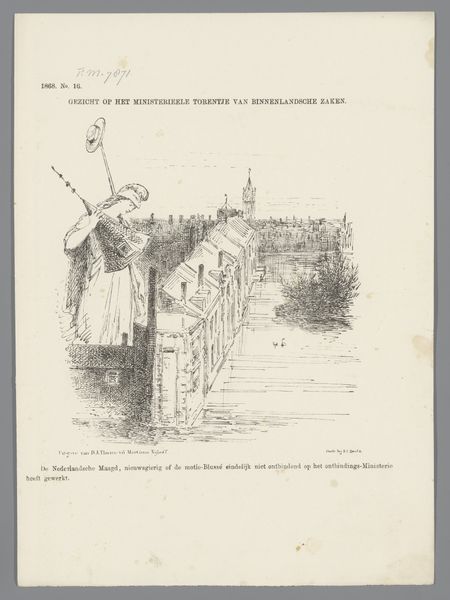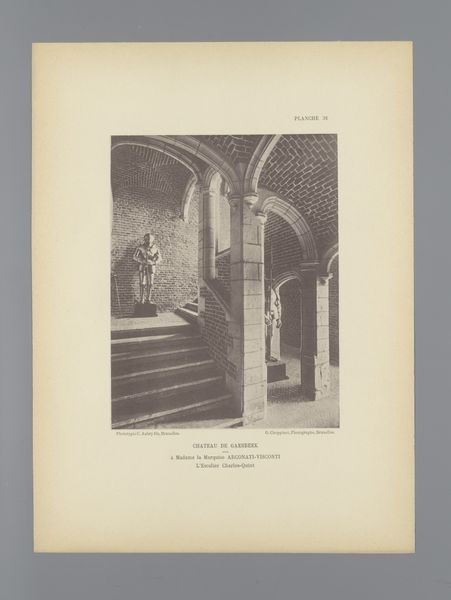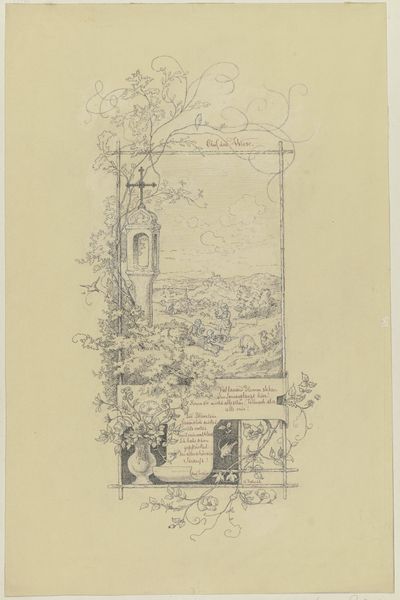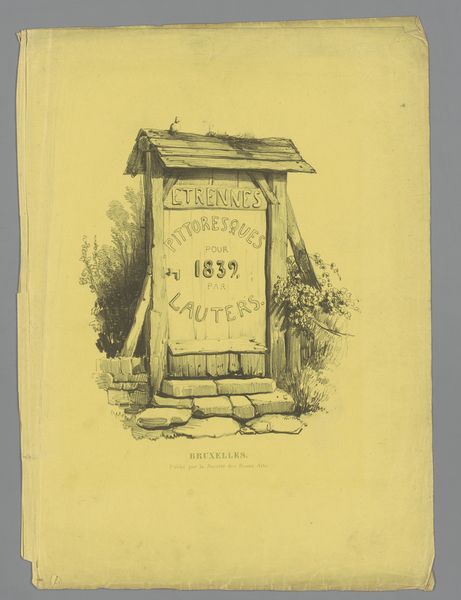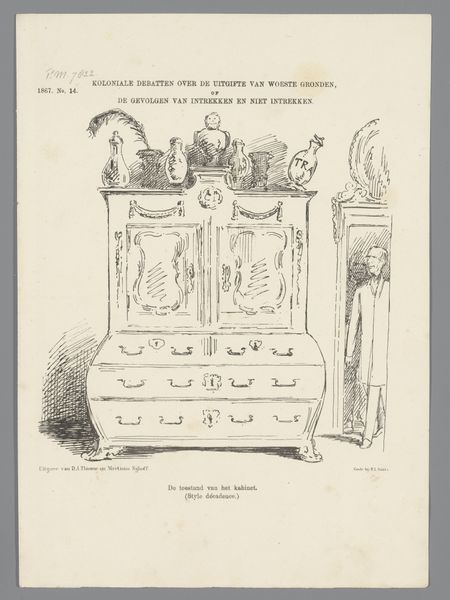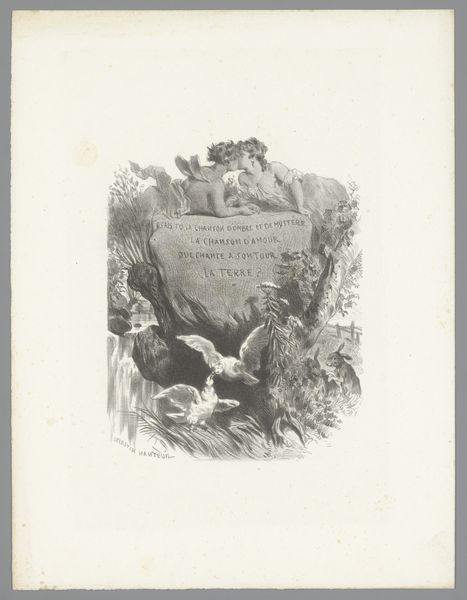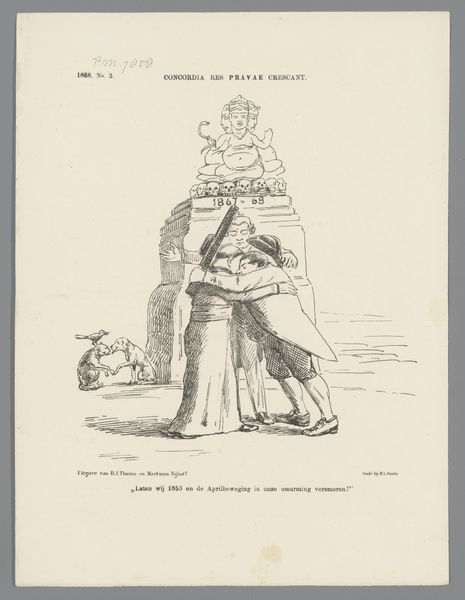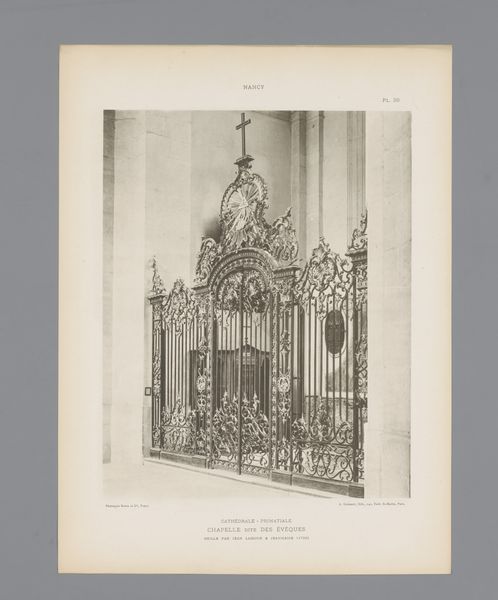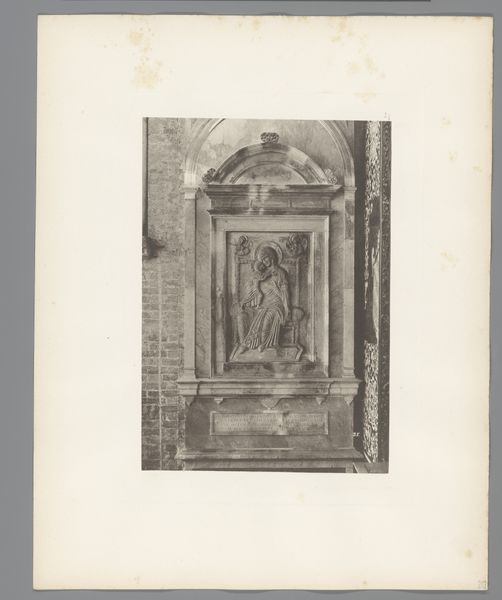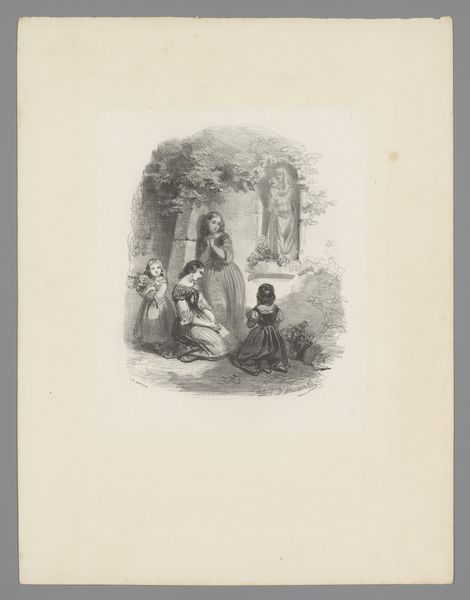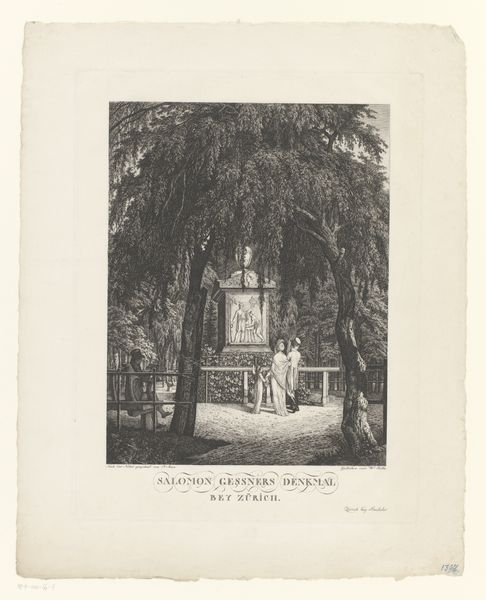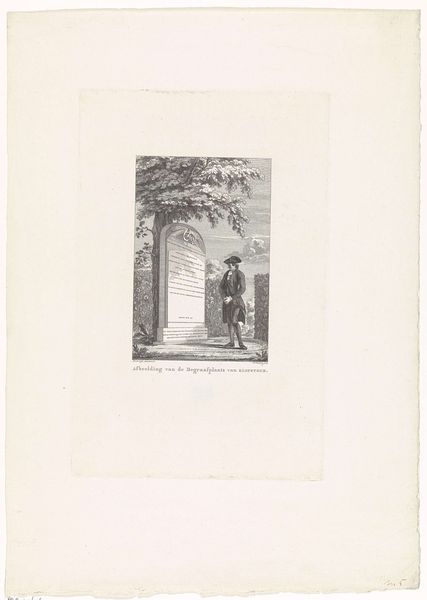
Spotprent met het grafsteen van het ministerie Heemskerk-Van Zuylen, 1868 1867
0:00
0:00
drawing, paper, ink
#
drawing
#
caricature
#
paper
#
ink
#
genre-painting
Dimensions: height 275 mm, width 215 mm
Copyright: Rijks Museum: Open Domain
Editor: Here we have "Spotprent met het grafsteen van het ministerie Heemskerk-Van Zuylen, 1868" made in 1867, by Johan Michael Schmidt Crans. It's an ink drawing on paper, resembling a caricature. The overall mood seems satirical, with the tombstone and wilting tree suggesting decay. What do you see in this piece? Curator: The wilting tree is a crucial visual element, as you noticed. Given that this is a caricature of a political administration, consider how natural imagery functions within political discourse. The dying tree could represent the fading power and influence of the Heemskerk-Van Zuylen ministry. Why do you think the artist chose to depict them as a tombstone specifically? What implications does that carry, especially concerning their legacy? Editor: Well, a tombstone signifies the end of something. Maybe the artist wanted to show that their policies or their time in power were essentially dead and buried? The inscription seems important, too. Curator: Absolutely! Let's unpack the inscription. It satirizes their promises of peace, juxtaposing "Vrede" [Peace] with a sense of eternal, perhaps forced, rest ("Hun asche ruste met Vrede..."). How might the concept of forced peace tie into broader societal tensions or political power dynamics of the time? What commentary might the artist be making about the actual state of "peace" under this ministry? Editor: I guess it implies that the peace they achieved wasn't genuine or beneficial for everyone. It was imposed rather than truly earned. Curator: Precisely! And who benefits from such impositions of power and “peace?” This work compels us to question the narratives propagated by those in authority and consider whose voices were suppressed in the process. Considering this perspective, does this impact your reading of the rest of the visual components? Editor: Yes, it makes the image more potent. I understand that the drawing is less about history and more about questioning political messaging! Curator: I completely agree; situating this artwork within its historical context reveals its powerful commentary on governance, peace, and societal narratives.
Comments
No comments
Be the first to comment and join the conversation on the ultimate creative platform.
